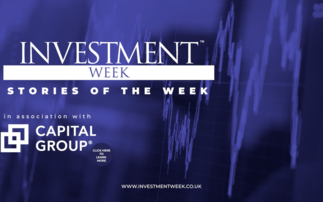The prices of core commodities, including oil and iron ore, have plunged in recent years. Michael Hulme, commodity equities fund manager at Carmignac Gestion, analyses the areas still able to offer value as industries consolidate and respond to price changes
Though last year's plunge in oil prices was partly offset by a near-50% rebound from March 2015 onwards, volatility continues to unsettle investors within the asset class.
There is reason to be cautiously optimistic on the outlook for some commodities, particularly oil, which continues to gain ground as US shale production begins to fall. Our long run forecast remains $80 to $90/barrel.
However, other industrial metals, in particular copper and iron ore, remain weak.
 Oil
Oil
With US production in retreat, the constraints on oil supply growth have become apparent. Outside of the US and the war-torn Middle East, it is not easy to see where the supply growth will come from.
Irrespective of efficiency measures, the world needs more oil every year as its population grows - every year there are another 80 million people in the world who will consume around 250 million barrels a year. But that oil is, for the most part, becoming increasingly scarce.
Undoubtedly there will be volatility as shale oil production switches on and off in response to prices, but, in a few years' time there is a strong argument to be made for peak shale production in the US. When that occurs, markets will return to the tightly constrained supply side that dominated oil markets from 2003 to 2008.
It will be a bumpy ride as shale production responds to price changes. We have likely passed the bottom of the oil market, and can be reasonably confident that prices will be higher than now in a few years' time.
On that basis, look carefully at oil sands producers like Suncor Energy, who have fairly stable production, with limited capital required to maintain production (unlike shale producers who must spend to keep the oil flowing), and who will benefit when prices return to previous highs.
Look for value in the oil service sector, as the US 'shale engine' springs back into life. Drillers such as Helmerich & Payne should benefit in terms of increased market share and stronger pricing.
In the long run, diversified services companies with a technological edge, such as Schlumberger and Halliburton, should also offer good investment returns as they help to unlock more inaccessible oil and gas reserves, both onshore and offshore.
Why are shale-related companies particularly attractive? These fields act like a factory - they can keep humming along with low capex, allowing for a stream of legacy investments to generate a return.
Ultimately, these will be profitable when the oil price becomes more sustainable.
 Copper
Copper
The continued weakness in Chinese data, combined with the strong dollar rally of the last six months, have together hurt copper.
This has created buying opportunities for copper, which also has the best long-term fundamentals in the industrial metals space, given grade declines, delayed new mines, and leverage to the growing electrification of the emerging world.
Our analysis shows demand growth will outstrip supply from 2016, setting the scene for a sustained rally over the next five years and beyond. China's move to a more aggressive stimulus in monetary policy should help kickstart this demand.
In fact, copper's supply-demand balance has echoes of oil in the early 2000s. Most analysts are bearish, but if you look beyond a few years, it is hard to see where the new supply is coming from.
This is why companies like Lundin Mining, the Canadian miner, with its disciplined, well-managed business, have shown a remarkable ability to weather the commodity downturn. Thanks to its Aguablanca and Eagle mines, Lundin has the added benefit of nickel exposure in addition to copper.
 Iron ore
Iron ore
Iron ore has been the foundation for China's decades-long fixed asset investment boom. But the commodity has plunged over the last year as China's GDP growth has slowed. Prices are down by more than two thirds today to $60/tonne.
This is where opportunities present themselves as the industry consolidates and reshapes itself for the next bull market. Stocks like Rio Tinto, world leader in iron ore with the lowest-cost production and a strong balance sheet, offer attractive long-term upside for the patient investor.
Nevertheless, the underlying macro picture is crucial as China consumes the majority of global iron ore production.
With China switching gears towards consumption and away from heavy industry in terms of policy priority, we expect iron ore demand to suffer.
So for iron ore to really work, we need to see a shake out of the weakest players, so that supply discipline can drive performance for the stronger producers like Rio and BHP Billiton.











